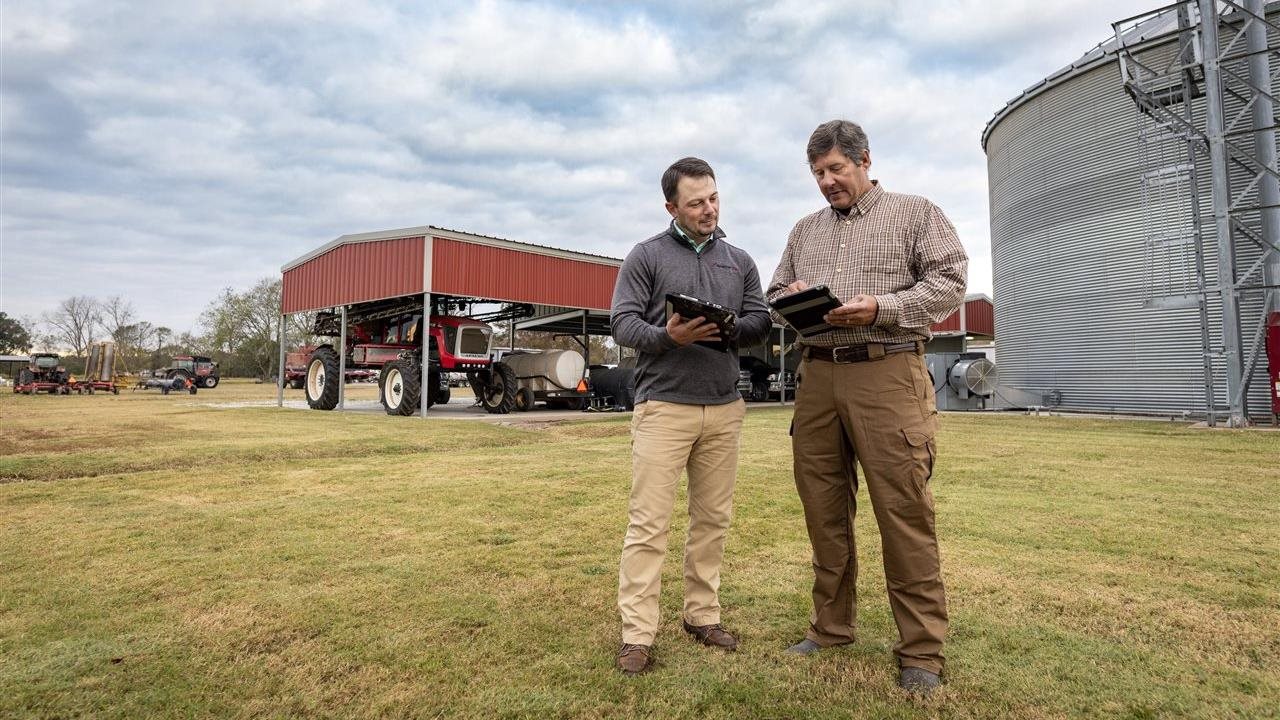
(BPT) – A teen tapping away on a smartphone is a common sight in the United States, but seeing a farmer in the field doing the same thing might confuse the average person. Although hands-on farming and hands-on technology might seem like juxtaposing concepts, they are complementary ideas propelling growers into the future.
“Without mobile communications, it would take longer and cost more to perform the tasks I do on the farm. There would be more face-to-face interactions, which create inefficiencies,” said Grant Morris, who owns and manages Schneider Farms in Pasco, Washington. He farms a total of 2,000 acres and produces grass seed, potatoes, sweet corn and peas for processing.
Morris uses apps for many tasks: to view satellite imagery that helps detect crop problems, look up invoices, monitor equipment operations, check fuel levels, buy inputs, transfer data, manage application rates, peruse agronomic recommendations, review sampling and scouting information and more. Morris equips each of his employees with a smartphone or tablet to do many of these tasks, too.
Producer Matt Moreland of South Haven, Kansas, is also embracing technology. He uses mobile communications to help him reduce driving time between the sections of Moreland Farms. With 10,000 acres of corn, cotton, soybeans and winter wheat spread over 40 miles, that’s significant.
“So much of our business is based on spreading the cost of our equipment over many acres; and the more acres we can spread those costs over, the more profitable we can be,” said Moreland, who farms with his wife and three sons. “By using mobile apps and other tools, we can manage a greater number of acres.”
He uses a multitude of apps to help his operation run smoothly, including the Syngenta AgriEdge® whole-farm management program. The program’s record-keeping platform enables him to simply and quickly access all of his farm information via mobile communications.
“I have all of my fields mapped, so at any given time, I can use my phone to see the exact acres on a field and what’s been applied to them, check planting dates and much more,” Moreland said.
He also uses apps to monitor rainfall and irrigation, an efficiency that saves money and can reduce water usage.
“We’ve installed monitors on the center pivots, so I can use my phone to check water pressure and the speed at which each is moving,” Moreland said. “If necessary, I can change the directions they’re moving and adjust water amounts with my fingertips. I will get a text, email or call if anything goes wrong — the app gives us that immediate notification and saves us trips to the fields.”
Morris and Moreland are just two of the many ag professionals who have adopted mobile technology to work more efficiently.
“The most significant value created by mobile communications is a return on time invested,” said Tommy Jackson, an executive account lead for Syngenta Crop Protection. “Our growers have the ability to make decisions quickly because the information they need is right at their fingertips.”
Jackson noted the Syngenta Pest Patrol alerts, which provide free and timely agronomic information for ag professionals throughout the South, as another way growers and crop consultants can get information quickly on their mobile devices. You can sign up to receive text messages based on your geography in participating states. When specialists post crop updates, subscribers receive text messages with a link that takes them to a short, recorded commentary on a timely topic.
Dominic Reisig, Ph.D., North Carolina State University extension entomologist, is a regular contributor to Pest Patrol. “It’s one of the methods I use to get timely updates to farmers and crop consultants during the growing season,” he said. “Our extension participants tell us that this is the program they receive the most positive feedback from.”
Today, farming success often relies on equal parts tradition and technology. Methods that have been curated over many years are now enhanced by technology that delivers vital information about crop yields, pest management and more directly to the farmer. A mobile device has become a go-to tool for many growers nationwide.
